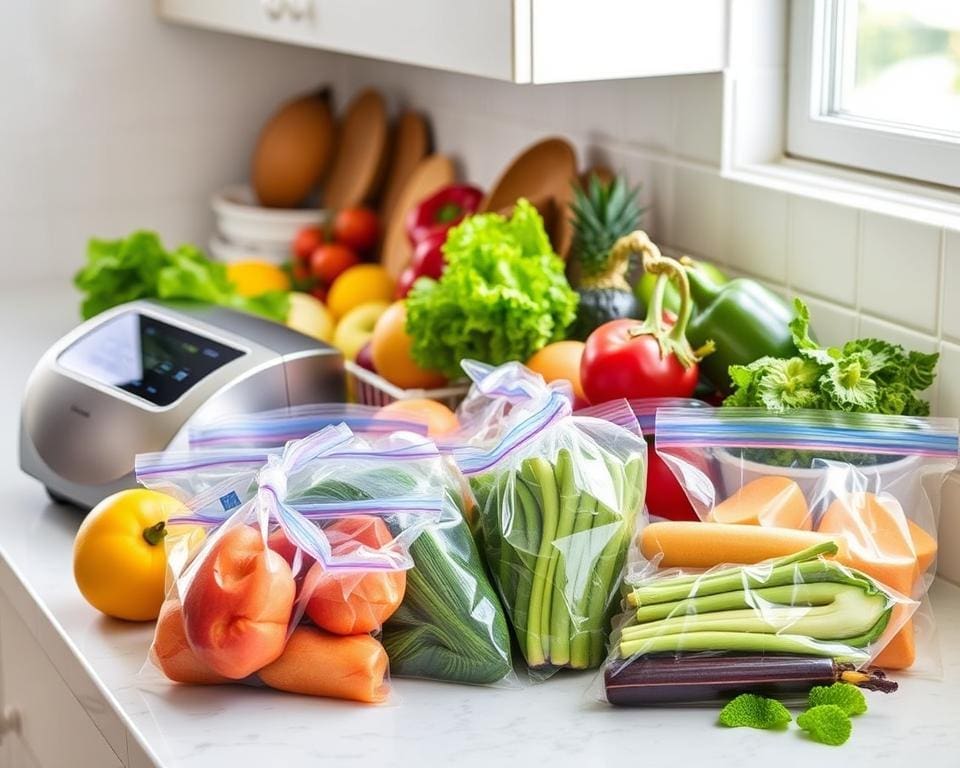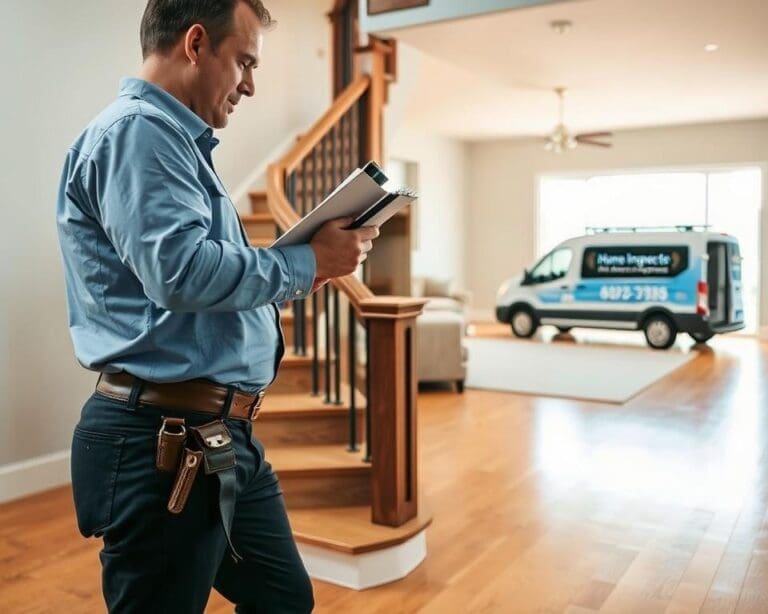In the heart of every modern kitchen across the United Kingdom lies a remarkable tool that has revolutionised food preservation: the vacuum sealer. This invaluable appliance not only extends the shelf life of a variety of foods but also ensures that flavours and nutrients are meticulously locked in. With the rise of vacuum sealers for long-lasting food storage, households are discovering new ways to minimise waste and save money while elevating their culinary experiences. Choosing the best vacuum sealer can lead to a transformative approach to maintaining food quality, ensuring your meals always taste fresh and delicious.
The Importance of Food Preservation
Food preservation plays a vital role in maintaining the quality and safety of our food supply. By understanding food degradation, one can take proactive measures to safeguard the freshness and nutritional benefits of various food items. Recognising the science behind how food deteriorates is the first step towards effective preservation.
Understanding Food Degradation
Food degradation occurs through various mechanisms such as oxidation caused by oxygen, moisture leading to mould growth, and light affecting taste and colour. These factors can drastically reduce a product’s shelf life and nutrient content. By understanding food degradation, individuals can implement strategies to prevent spoilage, ultimately preserving the integrity of food.
Benefits of Freshness and Quality
Preserving food freshness and quality results in numerous advantages. Retaining nutritional value enhances overall health, while superior flavour enriches culinary experiences. Implementing effective food preservation techniques not only reduces waste, which is a growing concern in households today, but it also leads to economic benefits by decreasing the frequency of food purchases. Therefore, embracing food preservation techniques can enhance both personal wellbeing and contribute to sustainability.

What is a Vacuum Sealer?
A vacuum sealer functions as a guardian of freshness, expertly designed to extend the shelf life of food. Knowing what is a vacuum sealer transforms the way we think about food storage and preservation. This ingenious device removes air from specially designed bags or containers, thereby reducing the oxygen levels around perishable items. By doing so, it effectively curbs oxidation, which is a primary cause of food spoilage.
How Vacuum Sealing Works
Understanding how vacuum sealing works provides insight into its functionality. The process begins with placing food inside a compatible bag. After positioning it in the sealer, the machine activates, drawing out air and sealing the bag through heat. This creates a tight, airless environment, greatly inhibiting the growth of bacteria and mould. Not only does this method prevent food waste, but it also maintains flavours and nutrients, leading to a more enjoyable culinary experience.
Types of Vacuum Sealing Machines
Exploring types of vacuum sealing machines reveals a variety of options suited for different needs. The two primary categories include:
- External suction sealers: These compact devices work by sucking the air out of bags placed in the machine. They are user-friendly and ideal for home use.
- Chamber sealers: These machines offer a more robust solution by sealing food inside a chamber, providing a stronger vacuum. They are highly effective for bulk sealing and are often favoured in commercial settings.
Choosing between these types allows individuals to align their culinary practices with their storage needs, transforming how they preserve food for the future.
Choosing the Best Vacuum Sealer
Finding the right vacuum sealer is crucial for effective food storage and preservation. With numerous brands and models available, understanding the key features of vacuum sealers can guide you in making an informed choice. Consider what functionalities matter most to you, whether it’s for marinating, vacuum packing dry goods, or preserving perishable items.
Key Features to Look For
When choosing the best vacuum sealer, keep an eye out for the following features:
- Sealing strength: The ability to create a tight seal can significantly influence freshness.
- Ease of use: Look for buttons and controls that are intuitive and simplify the sealing process.
- Size: Consider how much counter space you have and the size of the items you plan to seal.
- Versatility: Certain models come with additional functions, such as marinating or customised sealing options for different food types.
Comparing Different Models
As you navigate through various vacuum sealer reviews, it becomes evident that each model has its strengths. Leading brands such as FoodSaver, Anova, and Nesco have made a mark in the market. Review the capabilities, customer feedback, and the specifications that resonate with your needs. Look for models that provide detailed vacuum sealer reviews to better understand user experiences and performance. This analysis helps in making an educated decision that aligns with your budget while ensuring quality food storage.
Vacuum Sealers for Long-Lasting Food Storage
Food preservation remains a vital concern for households aiming to reduce waste and maintain quality. Vacuum sealers for long-lasting food storage provide a remarkable solution that is both efficient and economical. Understanding why vacuum sealing is effective unveils the advantages of an airtight environment designed to significantly prolong food freshness.
Why Vacuum Sealing Is Effective
Vacuum sealing protects food from spoilage by extracting air and creating a sealed environment. This process inhibits the growth of bacteria and mould, which thrive in oxygen-rich settings. The efficiency of vacuum sealers not only extends the shelf life of perishable goods but also preserves flavours and nutrients, leading to a more enjoyable culinary experience.
Longevity of Different Food Types
The longevity of different food types varies significantly based on their nature. For instance:
- Meat: When vacuum sealed, raw meat can last up to 2-3 years in the freezer, compared to just 4-12 months without sealing.
- Vegetables: Fresh vegetables typically last about 1-2 years when vacuum sealed, ensuring they maintain their freshness and nutritional value.
- Cooked Meals: Leftovers stored in vacuum-sealed bags can often last around 1-2 years, substantially reducing food waste.
These examples illustrate the power of vacuum sealers for long-lasting food storage. With the right techniques, consumers can optimise their food storage and enjoy high-quality meals over prolonged periods.
Vacuum Sealer Bags and Rolls
Understanding the range of vacuum sealer bags available is crucial for achieving optimal food preservation. Selecting the right type can significantly impact the effectiveness of your vacuum sealing process.
Types of Vacuum Sealer Bags
There are several types of vacuum sealer bags designed to cater to different storage needs. These include:
- Textured bags: Ideal for moist foods, as their texture aids in creating a strong seal.
- Smooth bags: Best suited for dry items, these bags provide a uniform sealing surface.
- Multi-layer bags: Offering enhanced durability, these bags are great for long-term storage, providing a barrier against moisture and air.
Choosing the Right Vacuum Sealer Roll
Vacuum sealer rolls allow users to customise the size of their bags, promoting versatility. When choosing a roll, consider the following aspects:
- Compatibility: Ensure the roll fits your vacuum sealer model to guarantee efficient sealing.
- Thickness: Thicker materials often provide better protection and durability.
- Food types: Select rolls that cater to specific foods like soft cheeses, meats, or vegetables for optimal results.
How to Use a Food Vacuum Sealer
Understanding how to use a food vacuum sealer can transform the way you store your food, ensuring that freshness and quality are preserved for longer. This section provides a step-by-step guide to vacuum sealing food while highlighting some common mistakes to avoid. By following these guidelines, you can maximise the effectiveness of your vacuum sealing efforts.
Step-by-Step Guide to Vacuum Sealing Food
- Prepare the Food: Start by ensuring that your food items are clean, dry, and appropriately portioned. Large or bulky items should be cut into manageable sizes.
- Select the Right Bag: Choose high-quality vacuum sealer bags or rolls suitable for your vacuum sealer model, as these facilitate optimal sealing.
- Fill the Bag: Place the food inside the bag, leaving enough space at the top for sealing. Avoid overfilling, this can lead to ineffective sealing.
- Seal the Bag: Insert the open end of the bag into the vacuum sealer and follow the manufacturer’s instructions to initiate the sealing process.
- Store the Sealed Bags: Once sealed, place the bags in the freezer, fridge, or pantry as needed, depending on the type of food.
Common Mistakes to Avoid
- Not drying food items completely before sealing. Moisture can lead to spoilage.
- Using bags not designed for vacuum sealing, which may compromise the seal.
- Ignoring the manufacturer’s instructions for optimal operation.
- Sealing food with air pockets, which can impact freshness and preservation.
Vacuum Sealers Versus Other Storage Methods
When exploring methods for preserving food, the debate often arises: vacuum sealers versus other storage methods. Traditional methods like freezing and canning have long been popular, each presenting unique advantages and disadvantages. Buyers can benefit from understanding a comprehensive comparison with freezing and canning to make informed decisions tailored to their needs.
Comparison with Freezing and Canning
Freezing maintains food quality effectively, preserving taste and texture. Canning, while offering a shelf-stable solution, requires more intricate preparation and alteration of the food’s flavour due to high heat processing. In contrast, vacuum sealing excels in retaining the original flavours and nutrients of food by eliminating air exposure. The simplicity of vacuum sealing makes it an attractive alternative in the kitchen.
Cost-Effectiveness Analysis
The cost-effectiveness of vacuum sealing emerges when considering long-term savings. By purchasing food in bulk and preserving it properly, consumers can significantly reduce waste. Additionally, vacuum-sealed items have a longer shelf life, prompting less frequent shopping trips and decreased overall expenditure on groceries. This method presents a savvy, economically wise choice for both individuals and families alike.
Top Vacuum Sealers on the Market
When considering the top vacuum sealers on the market, it’s essential to evaluate a range of options catering to diverse needs and budgets. Brands such as FoodSaver and NutriChef prominently feature in numerous reviews, known for their reliability and efficiency. FoodSaver models, for instance, stand out for their advanced sealing technology and user-friendly design, making them an excellent choice for both novices and seasoned users alike.
Budget-conscious shoppers may find the best vacuum sealer to be the V2850 by GERYON, which balances affordability with quality. This compact vacuum sealer is praised for its ease of use and effective sealing capabilities, ensuring food items stay fresh for extended periods. Similarly, the Morphy Richards Vacuum Sealer offers an economical choice, perfect for those starting their food preservation journey without compromising essential features.
For those seeking high-end options, the Weston Pro-2300 is a heavyweight champion, designed for serious food preservers. With its powerful motor and durable construction, it excels in handling large quantities and tougher materials. When determining the best vacuum sealer for your unique needs, reviewing performance, user-friendliness, and additional features will shed light on the options that suit your kitchen best, helping you achieve long-lasting food storage effortlessly.









